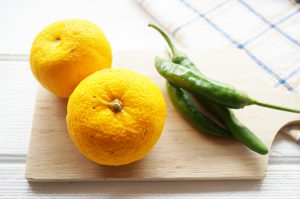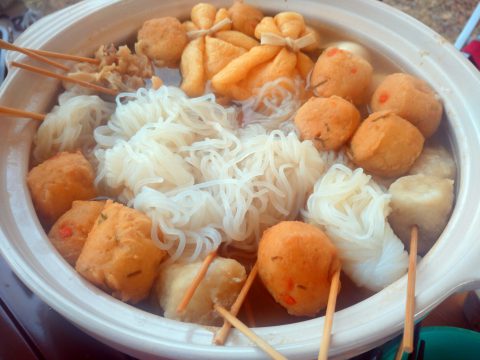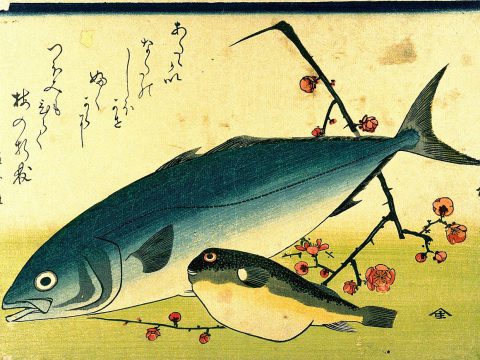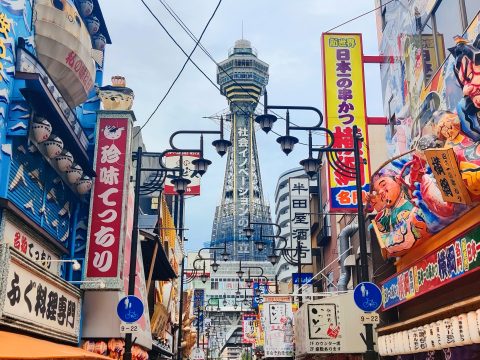Japanese Spicy Condiments
JAPANESE FOODS
03.10.2022
Japanese cuisine is not known for its spiciness compared to its neighbors, such as China and South Korea. But there are a few spicy Japanese condiments that can burn your nose and tongue! Here are some of these condiments you can find at the supermarket.
Yuzu kosho (柚子胡椒)
Yuzu kosho is a Japanese citrus chili paste featuring chili peppers, yuzu zest (a Japanese citrus fruit), and salt, which is then fermented. It’s a fiery, spicy, and salty paste. Add a few dabs to hot pot dishes, miso soup, sashimi, tempura, sauce, and salad dressings.

There are two types of yuzu kosho: green and red. Green yuzu kosho consists of green yuzu and green chili peppers. It’s spicier with a fresh and sharper flavor. Red yuzu kosho consists of ripe yellow yuzu and red chili peppers. It’s less spicy compared to green, with a richer taste.
Despite having three ingredients, it’s a highly concentrated paste that can add depth and flavor to your dish without overpowering it. Try a little bit first before going all in.
Shichimi togarashi (七味唐辛子)
Shichimi togarashi, or seven flavored chili peppers, is a spice blend featuring dried red chili pepper, sansho pepper, hemp seeds, white/black sesame seeds, mandarin orange peel, and nori. Some brands change the ingredients or the ratio, but it always includes seven elements.

It adds a subtle citrusy, nutty, umami complexity to the dish. You may see small cans or bottles at noodle restaurants. Sprinkle over noodles such as udon or soba, gyudon, miso soup, yakitori, and hot pot dishes. It’s not too spicy if you’re spice-adverse.
Ra-yu (ラー油・辣油)
Ra-yu is a Japanese sesame chili oil used as a finishing sauce on gyoza, ramen, yakisoba, fried rice, and more. It’s reddish-orange and color and may contain chili flakes. It’s not that spicy despite its color and is not for cooking.

Taberu Ra-yu (食べるラー油)
Taberu ra-yu (literally “edible ra-yu”) is ra-yu with edible crisps of aromatics and spices infused in the oil. The condiment trended around 2009 as a more exciting alternative to ra-yu. Depending on the brand, it may contain dried garlic, onion, ginger, scallops, shrimp, sesame seeds, and chili. It’s a chunky sauce you can use like ra-yu or pour over tofu, stir-fries, or rice.
Wasabi (山葵)
Pungent and spicy, wasabi, or Japanese horseradish, is known for its fiery nose-tingling flavor and sensation. The Japanese eat the spicy green paste as a condiment to sushi, sashimi, soba, and some Japanese dishes.
Real wasabi tastes bright, fresh, and intense. Most of the wasabi you may encounter is horseradish dyed green. You know it’s fake wasabi when you sense an immediate burning sensation in the nose and uniform green color and texture.

Karashi (辛子)
Karashi is hot Japanese mustard made of crushed mustard seeds and horseradish. Karashi is a spicier and more potent condiment than mild yellow mustard. You can buy karashi in tubes or powdered form.
Kōrēgusu (こーれーぐーす)
Kōrēgusu is an Okinawan condiment made of small chili peppers infused in Awamori (Okinawan rice-based distilled liquor). The Okinawans use it to add heat to dishes such as Okinawan noodles, stir-fries, miso soup, and sashimi. It’s pretty intense, so add a few drops first.


Kayoko Hirata Paku
Kayoko Hirata Paku is a food writer, translator, and bagel person. Growing up in Japan and the U.S., she currently resides in Tokyo with her peanut butter addicted husband, a very hungry baby, and many half-dead plants.
Read previous articles by the writer
Read latest articles
KEYWORDS
- # PICKPICK
- # Resume
- # alcohol
- # Rice
- # Soup
- # winter food
- # Fast Food
- # seafood
- # spicy foods
- # raw food
- # fermented food
- # Transportation
- # MEAT
- # Edo culture
- # suits
- # clothing
- # drink
- # fish
- # seasoning
- # Japanese New Years Foods
- # Toshikoshi soba
- # Osechi Ryori
- # Ozoni
- # Christmas
- # Japanese fusion pasta
- # Wafu Pasta
- # Japanese Hot Pot
- # なべ
- # 鍋
- # Miyazaki
- # Chicken Nanban
- # Karamen
- # Autumn Wagashi
- # Mushi-yokan
- # Imo-yokan
- # Japanese Autumn Fruits
- # Autumn
- # Vending Machine
- # fall
- # dango
- # Chestnut rice
- # saury
- # Mushroom
- # Rice vinegar
- # Japanese condiments
- # 調味料
- # Sake
- # Mirin
- # Soy sauce
- # Japanese Noodles
- # Udon
- # Ramen
- # Yakisoba
- # Soba
- # Japanese Seaweed
- # 海藻
- # かいそう
- # Payslip
- # Training
- # Japanese summer foods
- # 和菓子
- # Wagashi
- # ryokucha
- # 夏
- # 飲み物
- # Ramune
- # ラムネ
- # Pokari Sweat
- # ポカリスエット
- # Calpis
- # カルピス
- # Mugicha
- # ume
- # 梅
- # うめ
- # umeshu
- # job hunting
- # tofu
- # Recruitment in Japan
- # miso
- # Japanese cuisine
- # Yellowtail and bonito
- # Children’s Day
- # Kashiwa Mochi
- # Chimaki
- # fruits
- # Kusamochi
- # Types of Agriculture in Japan
- # bread
- # パン
- # パン屋さん
- # japanese bread
- # shokupan
- # meal blead
- # anko bread
- # 桜
- # さくら
- # cherry blossom
- # visa
- # hanami
- # omotenashi
- # sakura
- # おもてなし
- # Japanese hospitality
- # oshibori
- # wet hand towel
- # hand towel
- # restaurant
- # Commuting in Japan
- # Women-only cars
- # Exit gate
- # japanese train
- # train
- # valentine
- # Japanese sweets
- # 朝食
- # Japanese Breakfast
- # Breakfast
- # Japanese
- # 日本
- # healthy
- # persimmons
- # hoshigaki
- # HR
- # work in Japan
- # jinji ido
- # corporate systems
- # Japanese work culture
- # bento
- # ekiben
- # shinkansen
- # omiyage
- # train station
- # Japanese culture
- # work culture
- # mentaiko
- # umeboshi
- # Japanese snacks
- # potato chips
- # Japanese potato chips
- # Japanese writing
- # seaweed
- # konbu
- # ocean foods
- # shio konbu
- # dashi
- # miso soup
- # food processing
- # pear
- # nashi
- # sweet potato
- # japanese sweet potato
- # stingray
- # satsuma imo
- # food value chain
- # homecooking
- # agriculture
- # Japanese homecooking
- # farming
- # nikujaga
- # shojin ryori
- # meat and potatoes
- # traditional foods
- # comfort food
- # buddhist food
- # manufacturing
- # factory
- # eihire
- # vegetarian
- # food and beverage
- # izakaya
- # yatai
- # japanese festival
- # taiyaki
- # matsuri
- # summer
- # Ikayaki
- # smart agriculture
- # shaved ice
- # kakigori
- # かき氷
- # summer dessert
- # Japan
- # Japanese foods
- # dessert
- # fruit
- # matcha
- # icecream
- # Pikcup
- # Pikc up
- # Pcikup
- # skilled labor visa
- # working visa japan
- # Dineer Table in Japan
- # Japanese manner
- # Japanese food
- # Japanese Table Manner
- # Chopsticks
- # Japanese traffic signs
- # traffic information
- # road rules in Japan
- # chocolate
- # green tea
- # Osaka
- # Work Japan
- # Japanese company
- # ikura
- # sushi
- # nigiri
- # wasabi
- # PCIK
- # PICK UP
- # PICK
- # PICKUP








